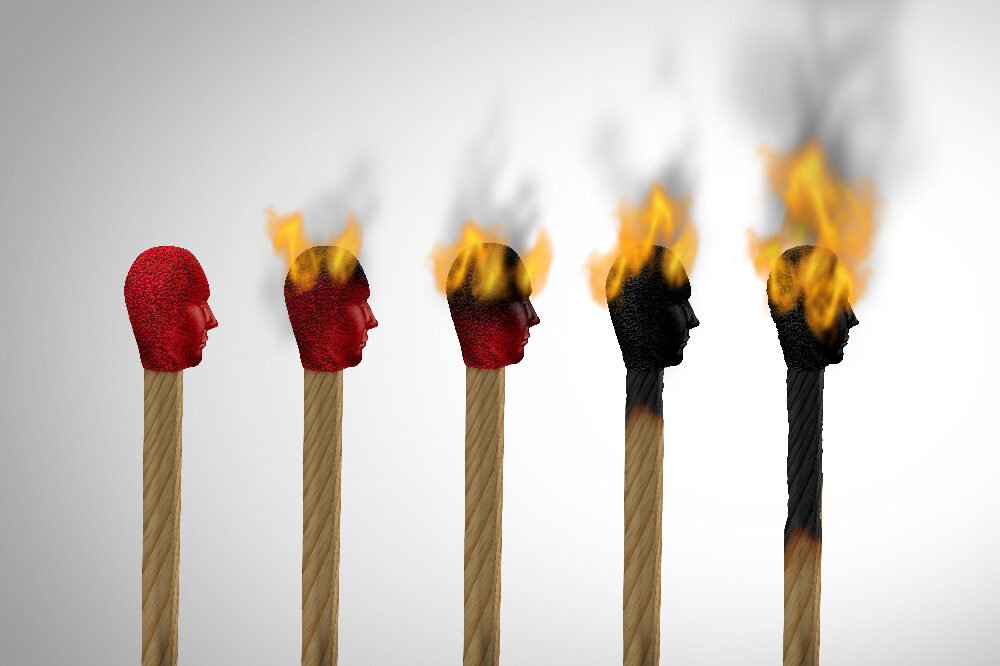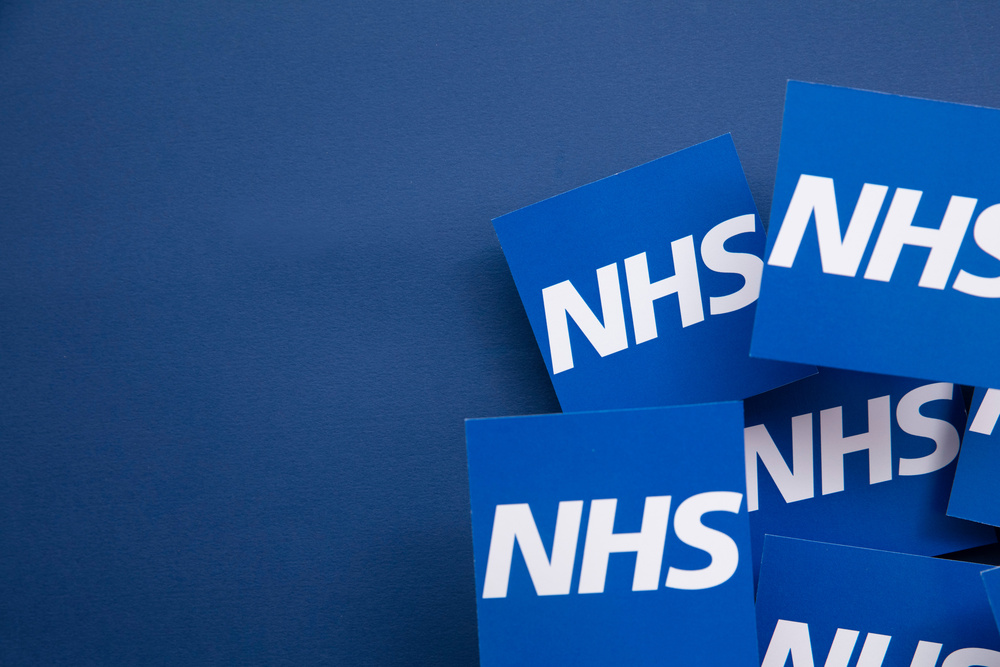Burnout has become so omnipresent in workplaces today that some health experts, such as Dr Anastasia Dedyukhina, digital wellbeing expert and author, are dubbing it “the new normal”. Certainly, Mental Health UK’s new annual benchmark for burnout in the UK makes worrying reading with one in five working adults needing to take time off in the last year due to poor mental health caused by pressure or stress.
This piece looks at what is driving modern burnout and how to counteract these damaging trends.
Pressure on middle managers
When it comes to wellbeing at work, there’s more pressure on middle managers than ever before. Not only do they have to achieve high levels of productivity and manage their own wellbeing to do that, but now they are expected to look after the wellbeing of their team members too.
Because of this, Liz Bradford, CEO of Transform Perform, argues that it’s not so much that middle managers are burning out, but more that “the pressure from above and below is snuffing them out” leading to “people leaving middle manager roles in droves”.
She goes as far as to say that “the life of a middle manager is now overwhelming unless safeguards are put in place”.
So what safeguards can be put in place to protect these pressured manager from burnout?
Bradford suggests, while it varies by individuals, there are broadly three recommendations:
- Networks: create networks where managers can share challenges, learn from mentors and peers or simply vent.
- Development: train managers in emotional intelligence. These will help managers self regulate, empathise and coach people to success
- Rest: Managers need to have periods where they can truly switch off especially after stressful periods
“We need to give our managers more time to be human. To connect. Burnout is a systemic issue that organisations need to address if they want to thrive,” she says.
The predisposition of neurodivergent colleagues to burnout
It’s undoubtedly a welcome development that workplaces are talking more about neurodiversity today and making efforts to understand how life is different for neurodivergent colleagues and how the workplace could be more inclusive. However, while the ability to focus singlemindedly is often cited as a superpower of neurodivergent employers, there is lesser awareness around their elevated vulnerability to burnout.
This can be for varying reasons – trying hard to fit in and overperform, masking their condition, perfectionism – but it’s essential employers are aware of this tendency and can spot signs early.
“As a neurodivergent woman who was diagnosed with autism and ADHD later in life, I’m all too familiar with the cycle of burnout at work,” says Cybil Watkins, Group Product Legislation Manager, Zellis. “For me, burnout is fuelled by overload and anxiety but it’s also been a direct result of masking my autistic traits day after day.”
As Watkins says, masking takes a huge amount of energy and is one of the main reasons that neurodivergent colleagues experience higher rates of burnout, with masking being more common amongst women too.
In her case, masking also meant it took longer to diagnose her and meant her typical cycle of burning out every six months went on for longer.
So, given her extensive experiences of burning out as a neurodivergent employee, what’s her advice for employers wanting to look after the wellbeing of their neurodivergent colleagues on this front?
“The only way for me to break that cycle was to find a truly inclusive team and an understanding manager who was willing to listen to my experiences and understand the world of work from my perspective,” she says.
Since she’s found this, she says she’s been able to be her “authentic self at work” (ie. uses less energy and so more for being productive) and she’s been with her current employer now for over a year, which is the longest she’s ever gone in her career so far without burning out.
Always on tech is creating relentless pressure on productivity
Natalie Skinner is a Systems Strategist who is passionate about wellbeing at work having herself suffered from burnout.
She’s also passionate about technology – it’s the core of her job – but believes that technology is the main culprit for the modern burnout epidemic: “this non stop connectivity delivers incredible benefits but also fosters a culture of instant gratification and relentless productivity; the pace is unyielding and we are expected to deliver more with less resources and tighter deadlines.”
As she says, even our downtime is “invaded” by screens, whether it be scrolling social media or binge watching Netflix, meaning our brains rarely get a break to relax.
In order to limit technology’s power to perpetuate burnout she believes that employers need to work hard to create cultures where a healthy work life balance is promoted and genuinely believed in. “It’s about giving individuals the freedom to tailor their work hours and integrate their work and life,” she says.
Indeed, O.C Tanner’s 2024 Global Culture Report identified a link between a lack of flexibility at work and increased chances of burnout.
The report concludes that:
“Odds of burnout increase 5x when employees are dissatisfied with the level of flexibility at work.”
Obviously not all roles can be done flexibly but the biggest problems with burnout arise when an individual knows that there is scope for flexibility but it is not being granted. As the report also states:
“Workplace flexibility that appears inequitable can be damaging to key cultural outcomes and lead to higher rates of burnout for the entire workforce. When workers believe there’s inequitable flexibility in their place of work, burnout is 387% more likely.”
Toxic cultures
Digital wellbeing expert Dr Anastasia Dedyukhina, founder of Consciously Digital, believes that with this influx of new technology also have come some bad cultural habits which are making burnout worse.
She believes for example that it leads to employees being less present with each other, even if they are in the same room.
She gives the example of the common scenario now where employees wander around the office with airpods in their ears.
“This creates a perception that the person is, to some degree, always ‘somewhere else’,” she says. “People are then hesitant to interact with the person, fearful of disturbing and being an annoyance. They tiptoe around the person creating an unhealthy environment for human connection and effective communication.”
Another example of an “unhealthy” culture which she’s increasingly hearing about, and which exacerbates burnout, is the constant multitasking. For instance, when people check emails on their phones in meetings which, again, gives the impression that they are not entirely present and their mind is partially elsewhere. This kind of behaviour decreases psychological safety, (because individuals feel less like they are being fully seen and heard) which is another factor which can act as a buffer to burnout.
As Dedyukhina says:
“This behaviour disrupts trust and creates subconscious unsafety. Multitasking also builds up unrealistic expectations of people’s own abilities. When we constantly multitask, it ultimately leaves us feeling that we aren’t enough because it is impossible to keep up or meet the unrealistic expectations we’ve created.”
Her advice?
Avoid multitasking when with others, and even limit it when you’re working on your own as it actually increases stress levels and creates extra workload. Also, manage people’s expectations better of when you are and are not available.
“Not available may mean you are working in a deep way and don’t want to be distracted, or you are having a proper rest,” she says, both are important for productivity and avoiding burnout.















